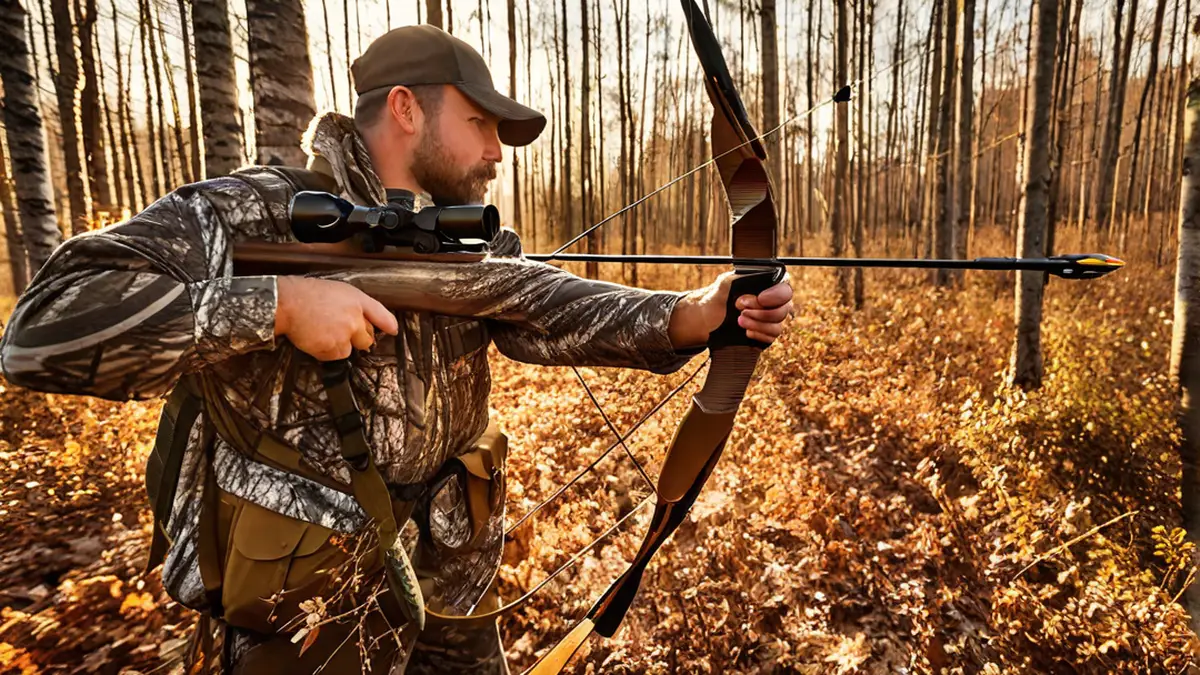When it comes to bow hunting, choosing the right bow is essential for a successful and enjoyable experience. As an avid hunter myself, I have tried various bows over the years and have come to appreciate the unique qualities of each. In this article, I will share my insights and personal experiences to help you find the best bow for your hunting needs.
Understanding the Different Types of Bows
Before we dive into the specifics, let’s take a look at the different types of bows available on the market. The three main types of bows used in hunting are compound bows, recurve bows, and traditional bows.
Compound bows: These bows are known for their mechanical components, such as cams and pulleys, which provide a high degree of accuracy and power. They are a popular choice among hunters due to their versatility and ease of use. Personally, I have found compound bows to be incredibly reliable and efficient in the field.
Recurve bows: Recurve bows have a traditional, elegant design and are favored by many experienced hunters. They are known for their simplicity and reliability. Although they require more skill to master, recurve bows offer a unique connection with the ancient tradition of archery. I have enjoyed the challenge and the sense of accomplishment that comes with using a recurve bow.
Traditional bows: For those seeking a truly primitive hunting experience, traditional bows, such as longbows or self-bows, are the way to go. These bows have been used for centuries and require the most skill and practice to use effectively. While traditional bows may not offer the same level of accuracy as compound or recurve bows, they provide a deep connection to our hunting heritage.
Factors to Consider
Now that we have explored the different types of bows, let’s delve into the factors you should consider when choosing the best bow for hunting:
- Draw Weight: The draw weight of a bow determines how much force is required to fully draw the bowstring. It is crucial to choose a bow with a draw weight that you can comfortably handle. I recommend starting with a lower draw weight and gradually increasing it as you build strength and improve your shooting skills.
- Draw Length: The draw length is the distance between the bowstring at full draw and the grip of the bow. It is important to select a bow with an appropriate draw length for your body size and shooting style. A bow with the correct draw length will help you achieve consistent and accurate shots.
- Speed and Kinetic Energy: The speed and kinetic energy of a bow play a significant role in hunting. A faster bow will deliver the arrow with more force and velocity, which can improve penetration and increase your chances of making a clean kill. However, keep in mind that a faster bow may also be noisier and have a harsher draw cycle.
- Axle-to-Axle Length: The axle-to-axle length refers to the distance between the cam or limb mounting points on a compound bow. A shorter axle-to-axle length provides maneuverability in tight spaces, while a longer length offers greater stability and accuracy. Consider the hunting terrain you will be navigating and choose accordingly.
- Noise and Vibration: When hunting, it is crucial to have a quiet bow that minimizes noise and vibration. A noisy bow can alert game animals and ruin your chances of a successful shot. Look for bows with built-in noise-dampening technologies, such as limb dampeners or string silencers.
My Personal Recommendation
After years of hunting with different bows, I have found the Hoyt RX-3 to be my go-to choice. This compound bow offers a perfect balance of speed, accuracy, and comfort. With its smooth draw cycle and adjustable draw length, the Hoyt RX-3 provides a customized shooting experience. The RX-3’s compact design and reduced vibration make it an excellent choice for hunting in tight spaces and stealthy encounters.
However, it is important to note that the best bow for hunting ultimately depends on your personal preferences, shooting style, and hunting conditions. I highly recommend visiting a reputable archery shop and testing various bows to find the one that feels the most comfortable and suits your needs.
Conclusion
Choosing the best bow for hunting is a highly subjective decision that requires careful consideration of various factors. Whether you prefer the modern technology of a compound bow, the traditional charm of a recurve bow, or the primitive simplicity of a traditional bow, there is a perfect option out there for you. Remember to prioritize comfort, accuracy, and reliability when making your choice, and never hesitate to seek advice from experienced hunters or archery professionals. Happy hunting!


